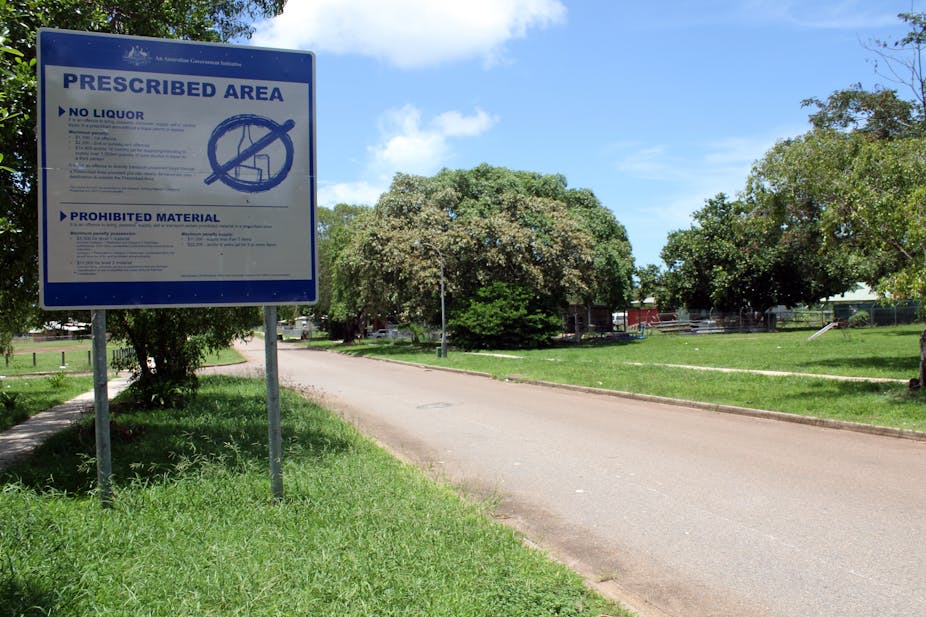The sun is setting as I drive home from my work at Charles Darwin University. My route runs between Nightcliff, a funky beach suburb with old-style Darwin elevated houses, and new high-rises springing up to exploit the demands of the most unforgiving housing market in the country.
I drive past mangroves. At high tide, people fish from the side of the road and the water. I always look for crocs, but I haven’t seen one yet. It is my favourite time of day.

Just before the left turn into Douglas Street, there is a bus stop. A dirt track runs off to the right of the busy road to a scatter of houses.
The sky is dramatic above. It is the end of the wet season and there are still large impressive heads of cloud that gather. No subtle colours here. Each day the red skies light up this scene with all the signs of tropical living in Darwin.
But the setting sun lights up another sign of living in Darwin.
A sign of division, it is very large, white with blue writing, erected to the left of the dirt road entrance to the suburb on my right. The sun bounces off the sign as if to draw attention to this “Australian Government Initiative”. “PRESCRIBED AREA” is written large enough to clearly read from the road.
Underneath in font half that size and still readable from the road it says “NO LIQUOR”. To its right is a large picture of a bottle, can and box circled with a diagonal line through it.
The lower half of the sign says “PROHBITED MATERIAL”. This section used to say “NO PORNOGRAPHY”. Both sections are followed by the small print – yes, I have to get out of my car and walk up to the sign to read the legislation enacted over my neighbouring suburb.

Neighbours twenty metres away are not subject to this legislation. It only applies to particular suburbs, all of which are Indigenous communities.
I try to imagine this sign, replicated next to the entrance of every suburb in Darwin… every suburb in Australia. It is Federal Government policy, implemented with bipartisan agreement.
This agreement perpetuates the Northern Territory Emergency Response (NTER) that erects such signs in our neighbourhoods. Children who live in the number of suburbs designated “Prescribed Areas” around Darwin have grown up passing this sign daily.
Every day, Darwin residents and visitors drive past signs that further entrench every stereotype of Indigenous people I can think of. The public health campaigns to deal with the Territory’s significant drinking levels do not place signs such as these in front of each suburb.
The signs are a dramatic representation of the NTER legislation that should not be imposed on my neighbours. They create artificial segregation from friends, colleagues and family who live there and here.
Indeed, if the legislation responded to statistical evidence the signs would be erected in Canberra, with the highest reported rates of sexual abuse. It is also a territory subject to Federal Government powers.
There is no hiding the signs of racial discrimination. Even if removed from view, the fact remains that the Federal Government required the Racial Discrimination Act 1975 to be lifted and amended in order to affect the NTER.
Each day, driving past the sign, these thoughts spin through my head. Evening spreads over the mangroves and the noisy process of people, birds and animals settling down and waking up.
The sign is invisible in the night. But its implications are harshly clear in the lights of cars and the windows of my neighbours.

